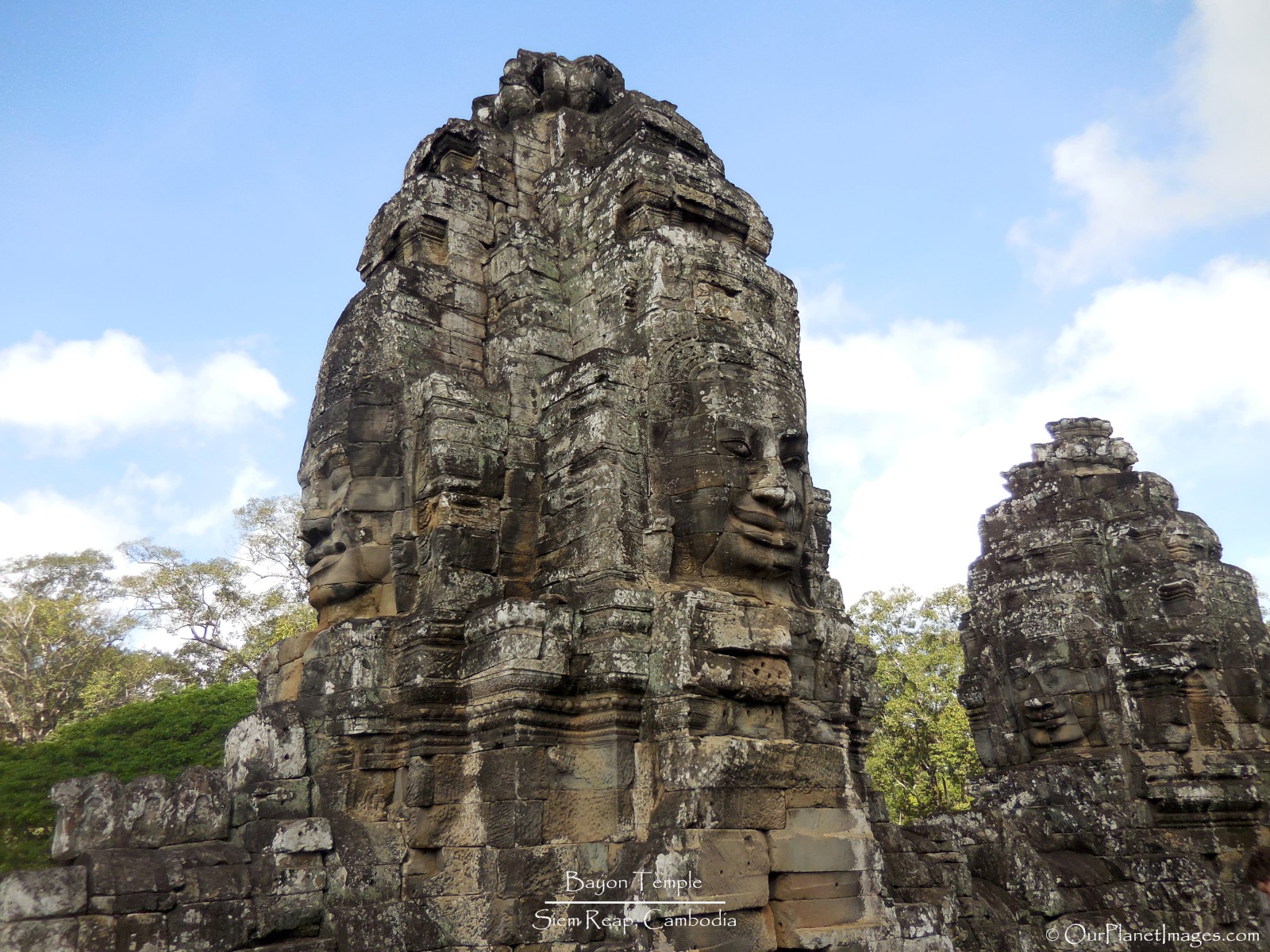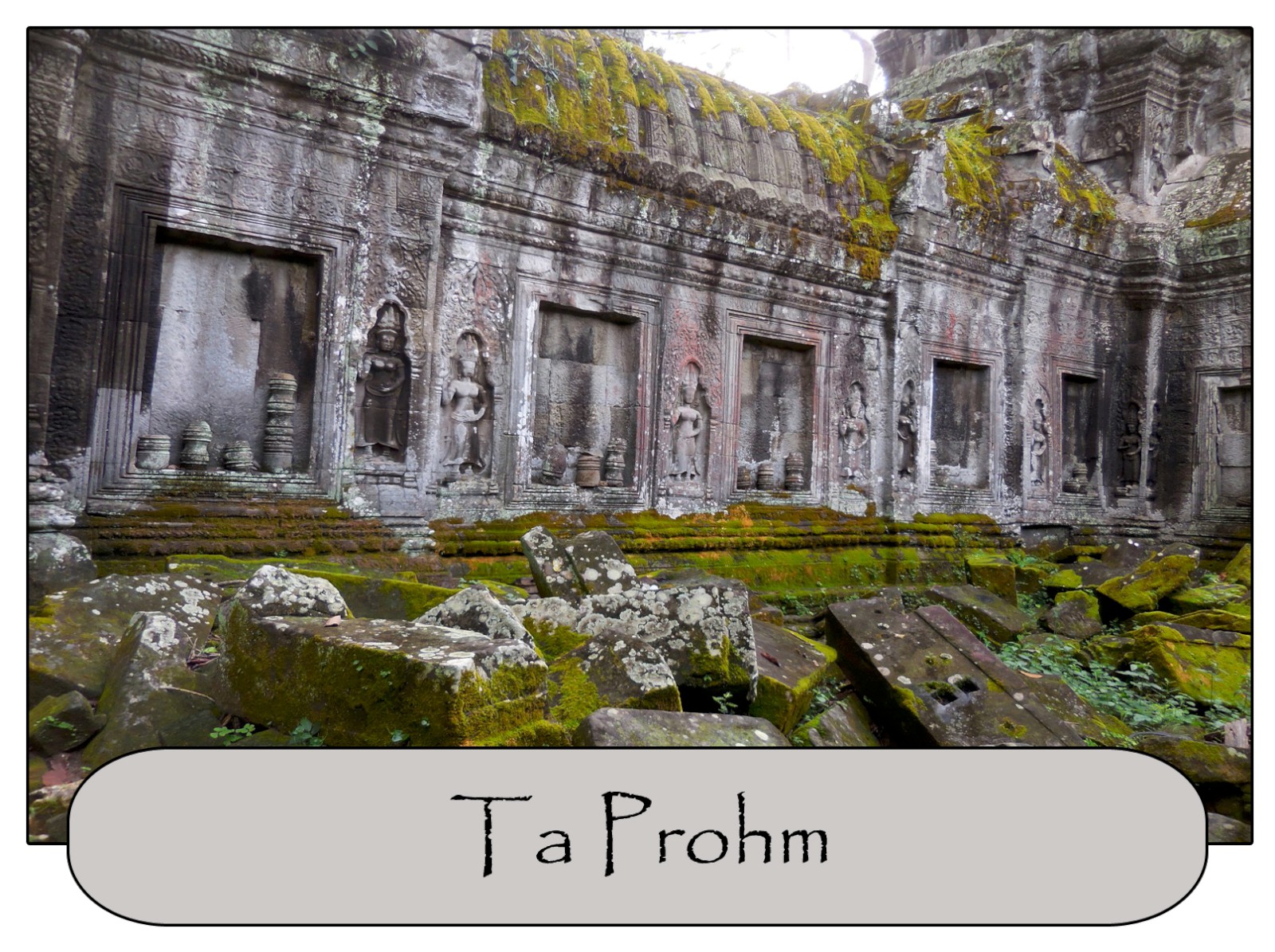The Bayon Temple is a Khmer Temple that is part of the Angkor Complex located in Cambodia near Siem Reap. Prior to my visit, I knew about the stone faces that I thought was part of Angkor Wat but I did not know about The Bayon Temple or Angkor Tom. Angkor Wat, Angkor Tom and the Bayon Temple are what most people think is just Angkor Wat. I will give more details about Angkor Wat and Angkor Tom in other posts.
While the Bayon Temple may have been built as a Buddhist Temple, to me it is more of a ruins as it was built in the 12th to 14th centuries and to my knowledge it is not currently an active temple. The picture below shows the shows the outer edge of the temple looking through a window of one of the entrances.
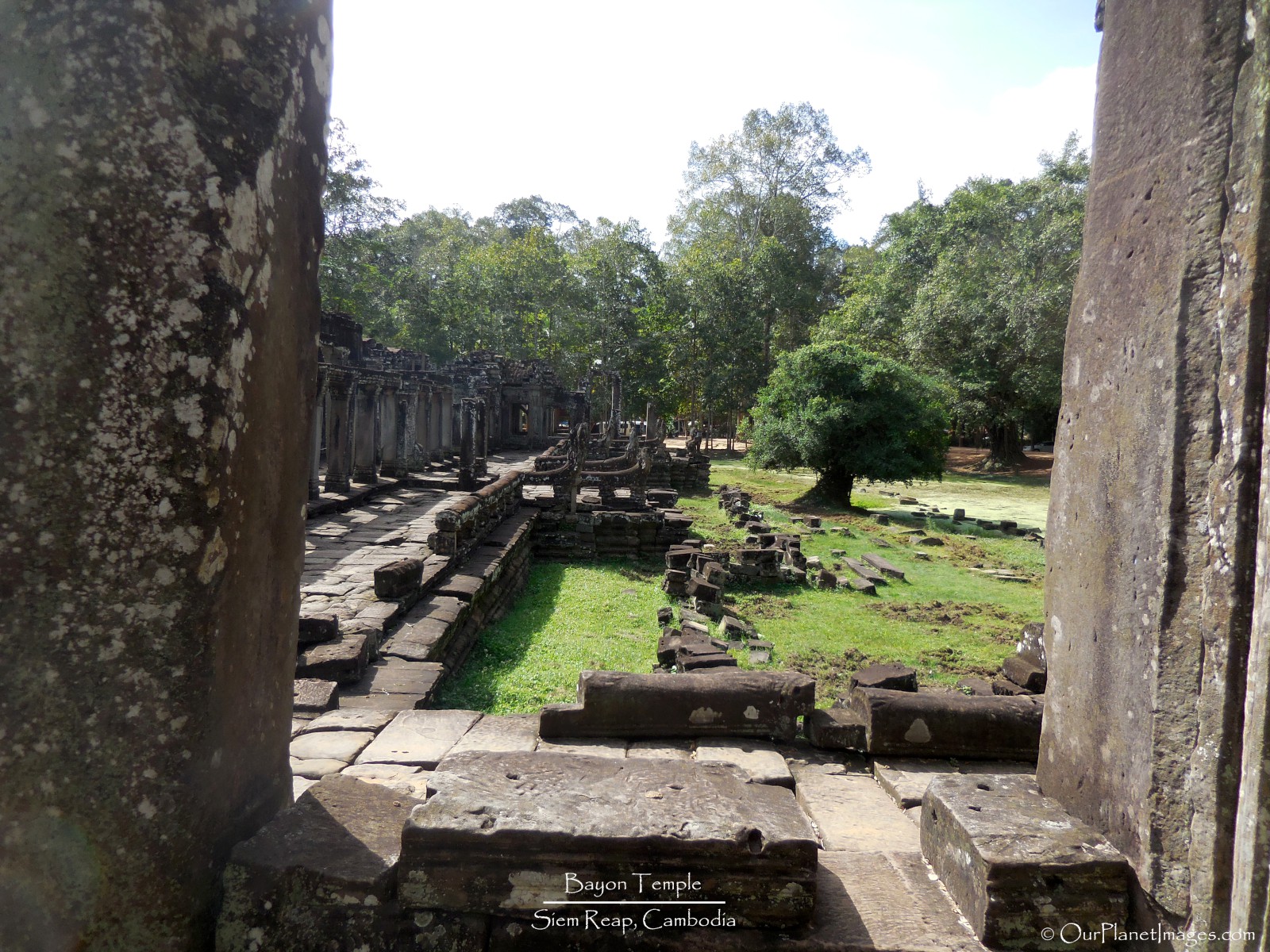
The Bayon Temple is best known for the multitudes of serene and smiling giant stone faces on many of the towers on the upper terrace and clusters around its central peak. The upper terrace is a small area and the stone faces seem to be everywhere that you look. The size of the faces are all very large and tightly packed into a small area giving you the impression that the scale of the faces are out of proportion for the area that they are built. Many of the faces are extremely similar and others are different. There are a total of 216 faces at the temple and the pictures below shows just a few of these stone faces.
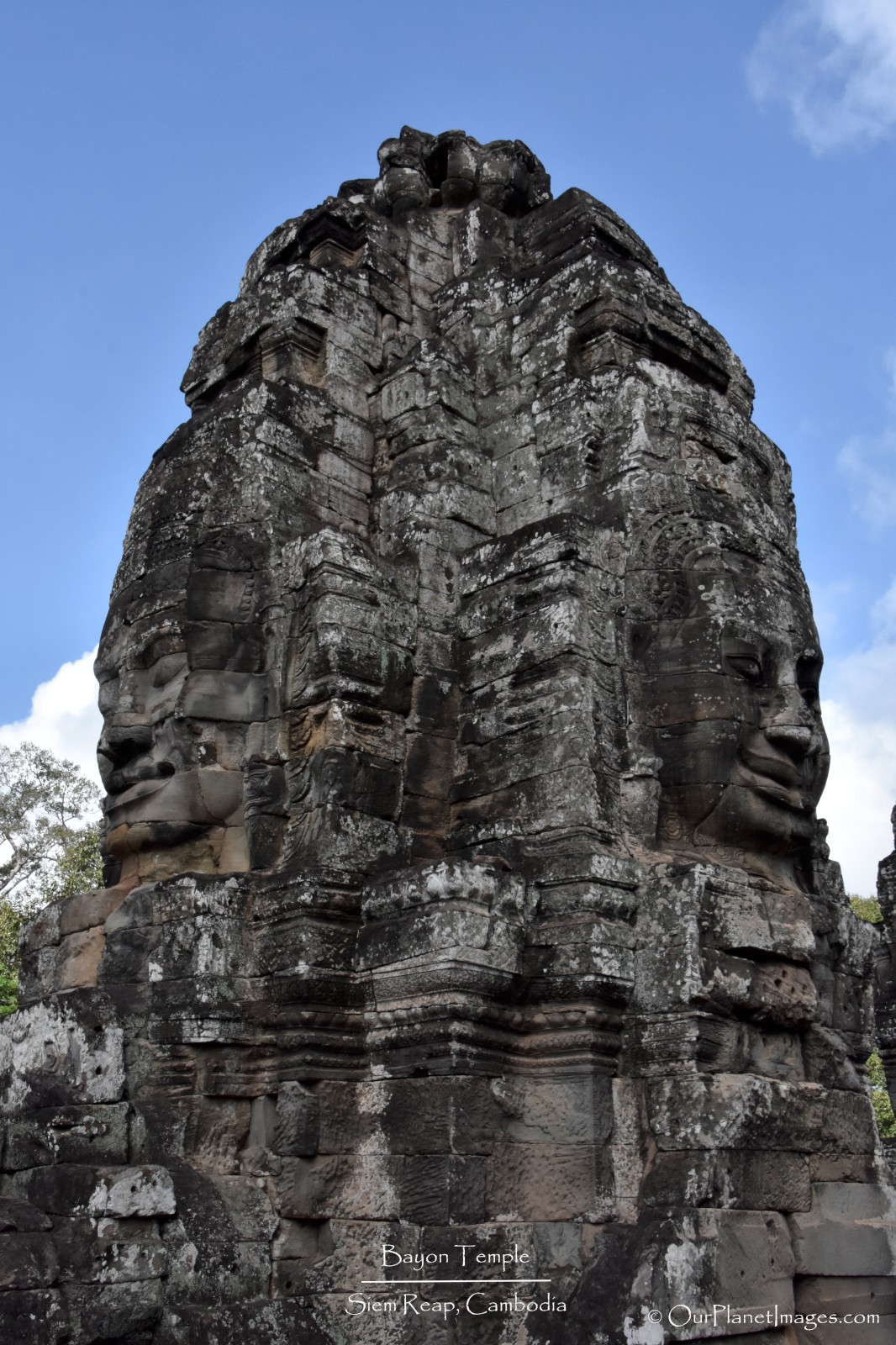
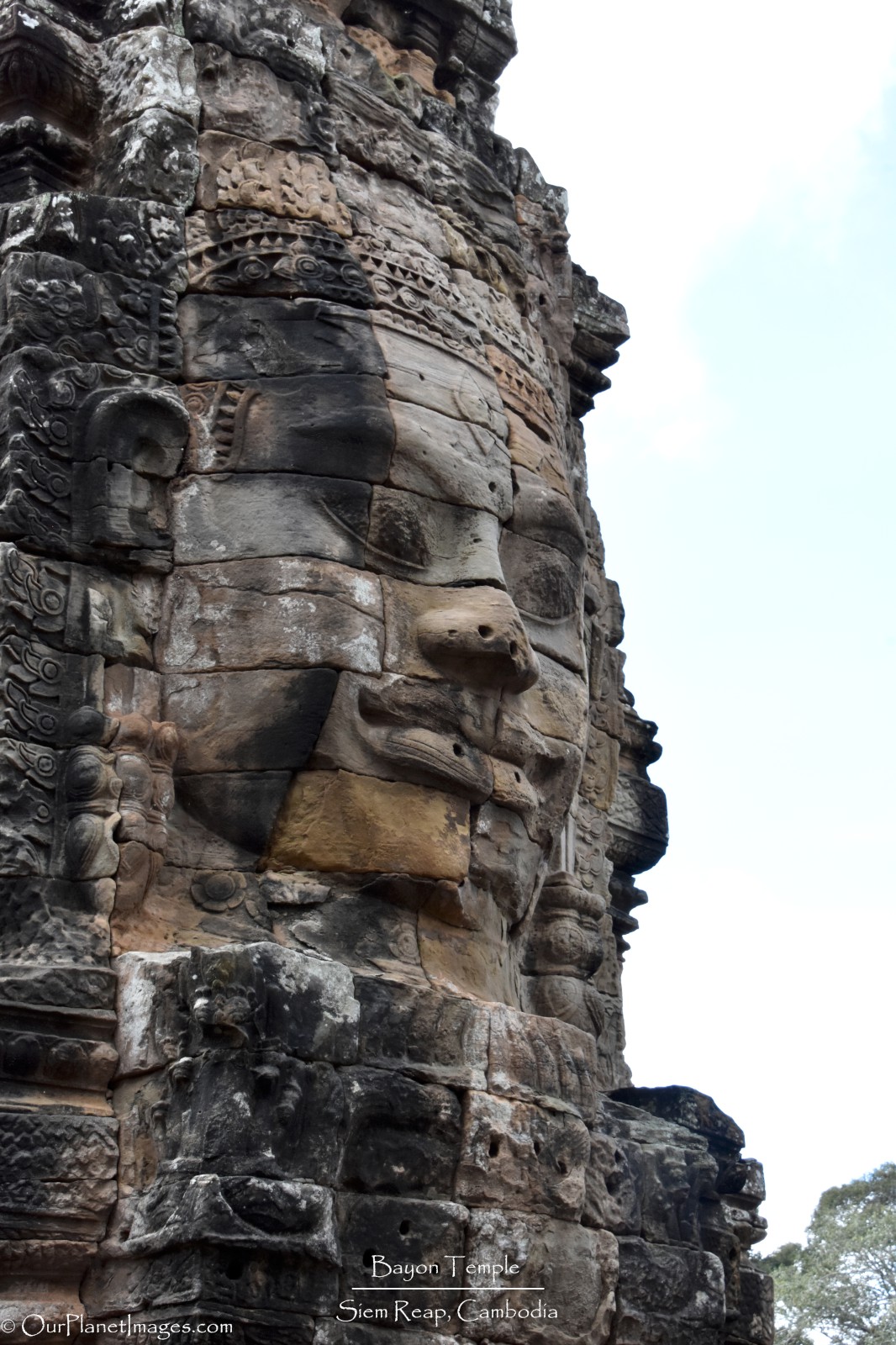
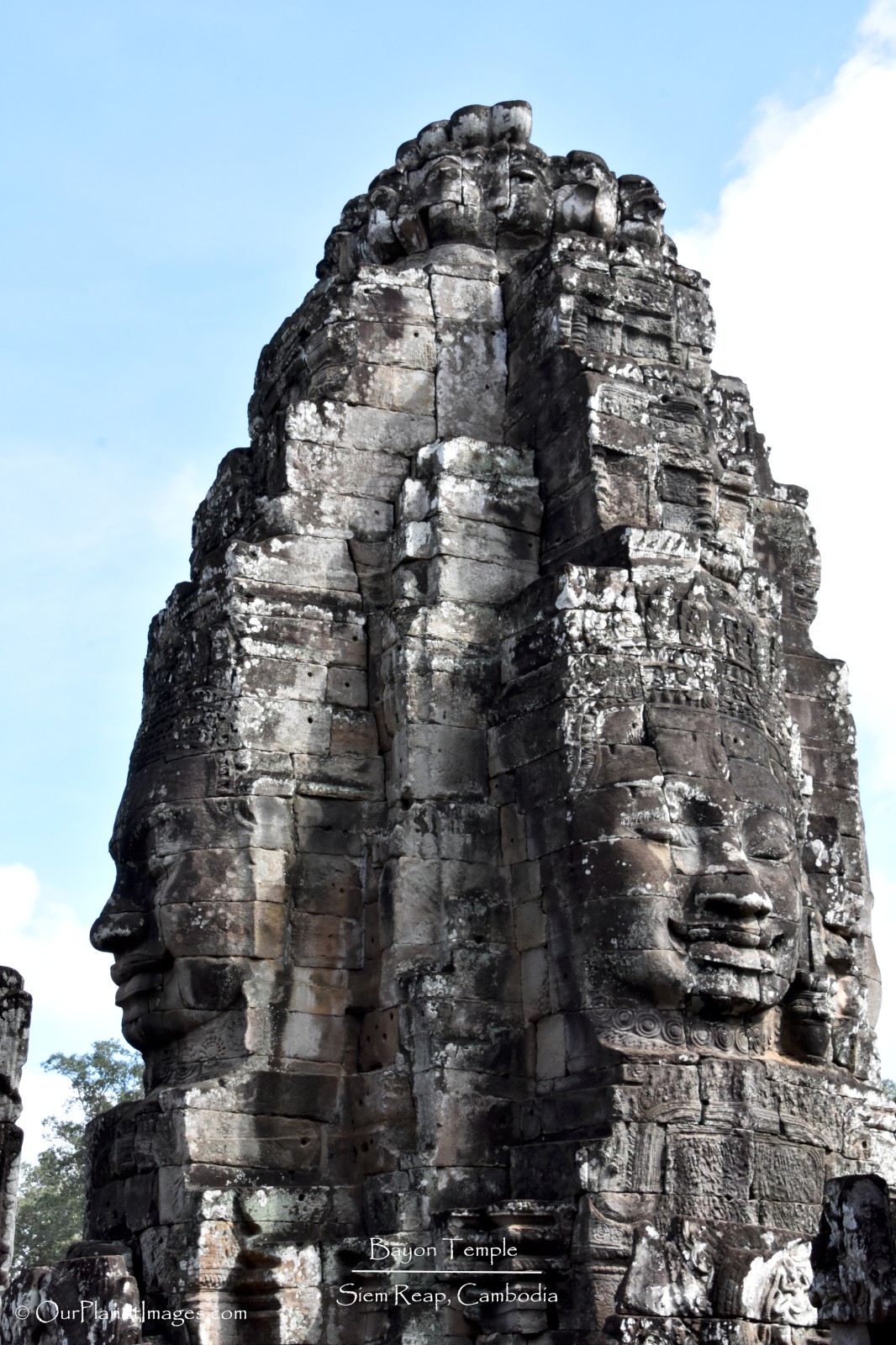

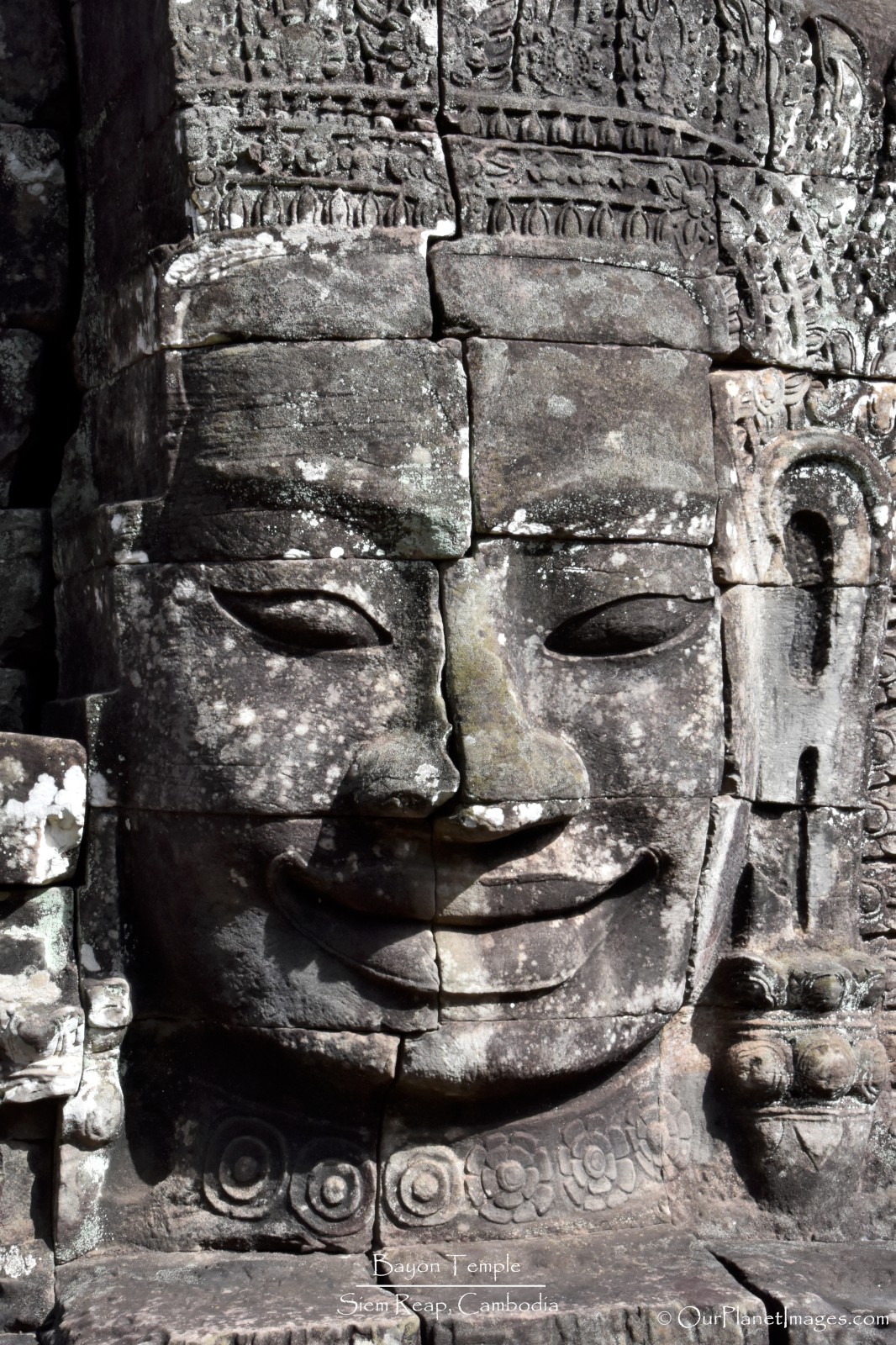
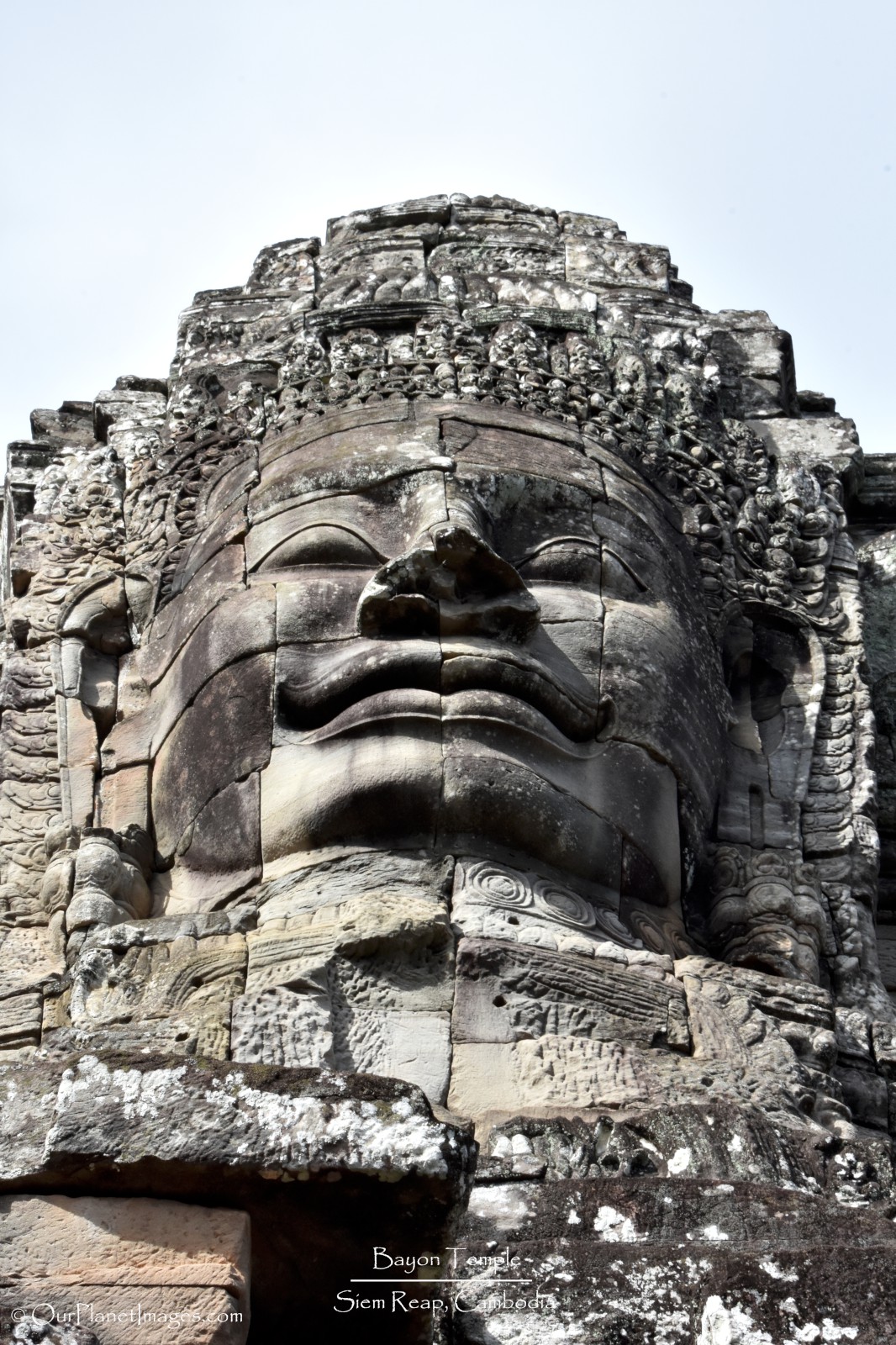
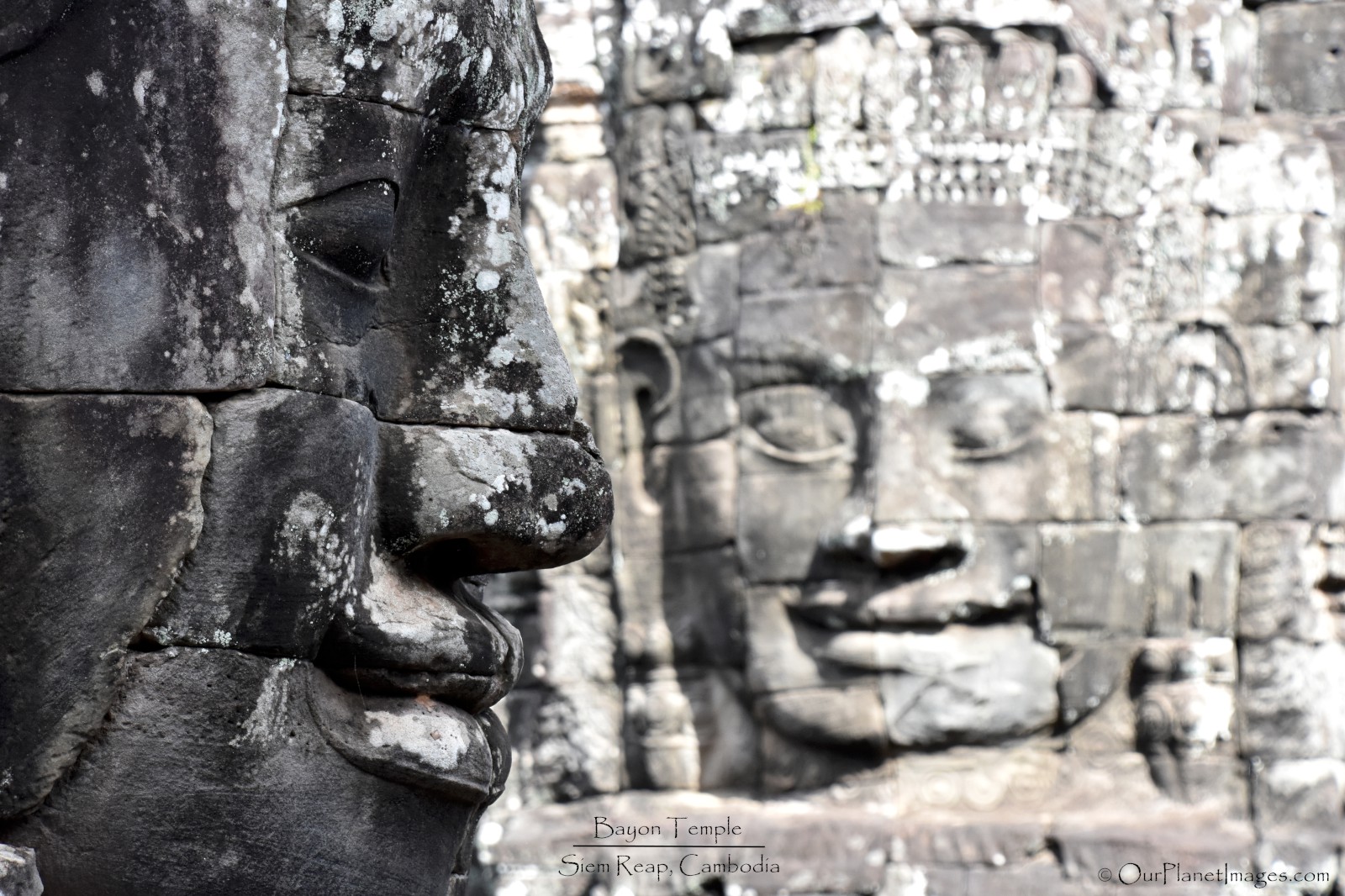
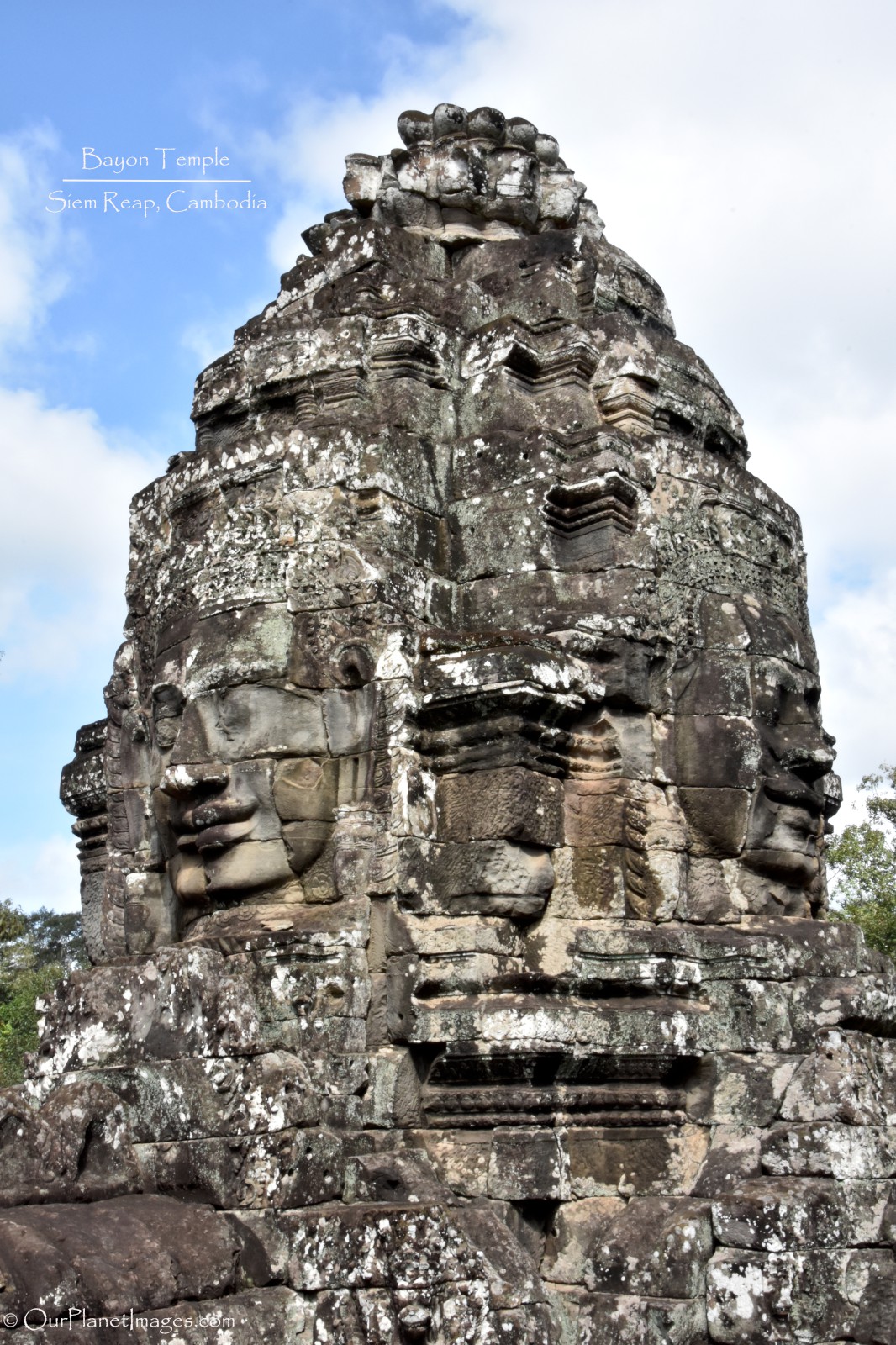
The stone faces are also on the corners of the outer wall and the trees from the jungle grow very near the outer wall in some place. There is lots of birds and other wildlife in the surrounding trees and the noise of the jungle adds to the experience of being in an ancient ruins. The photos below are of the stone faces along the outer wall of the Bayon Temple.
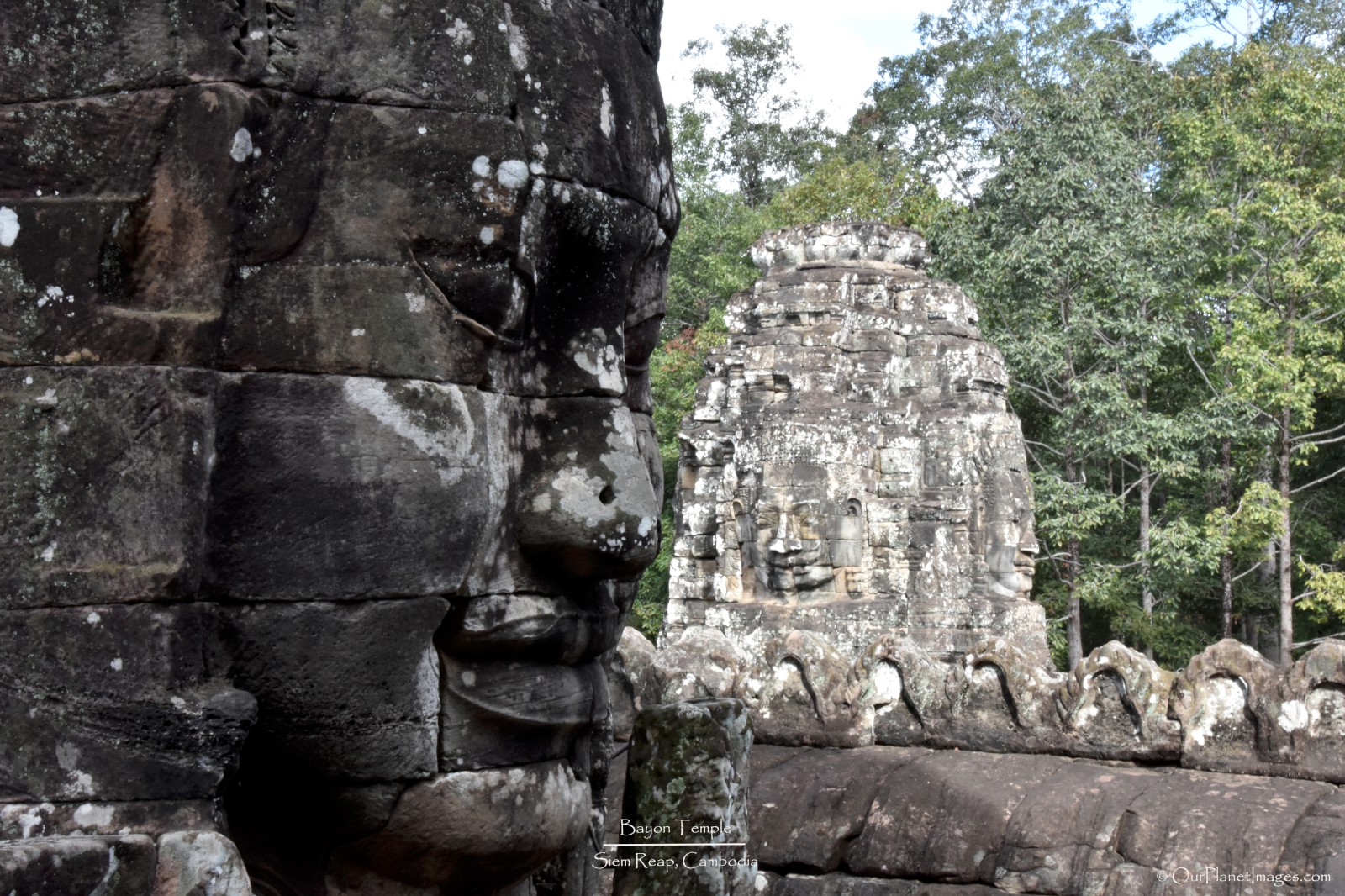
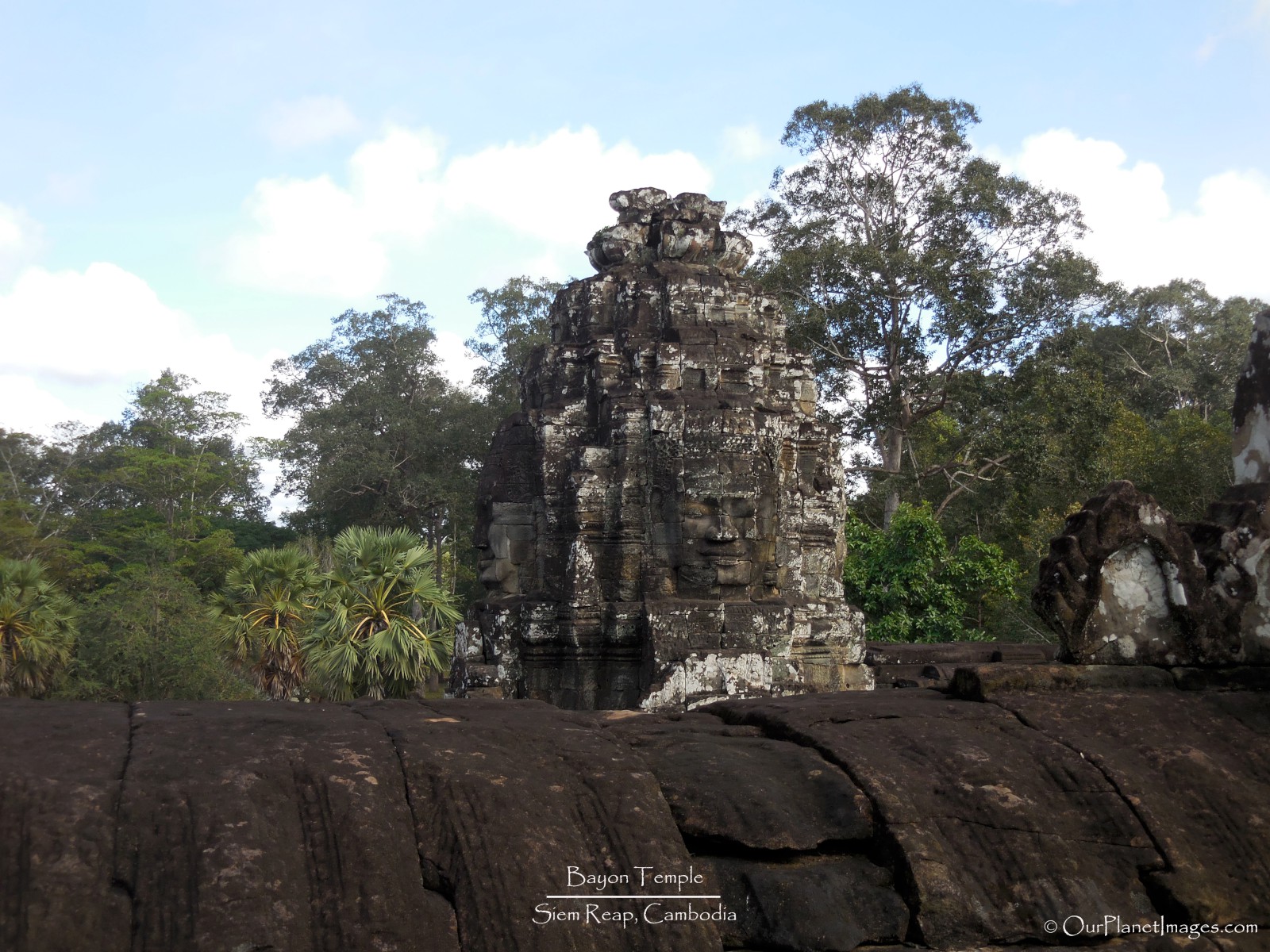
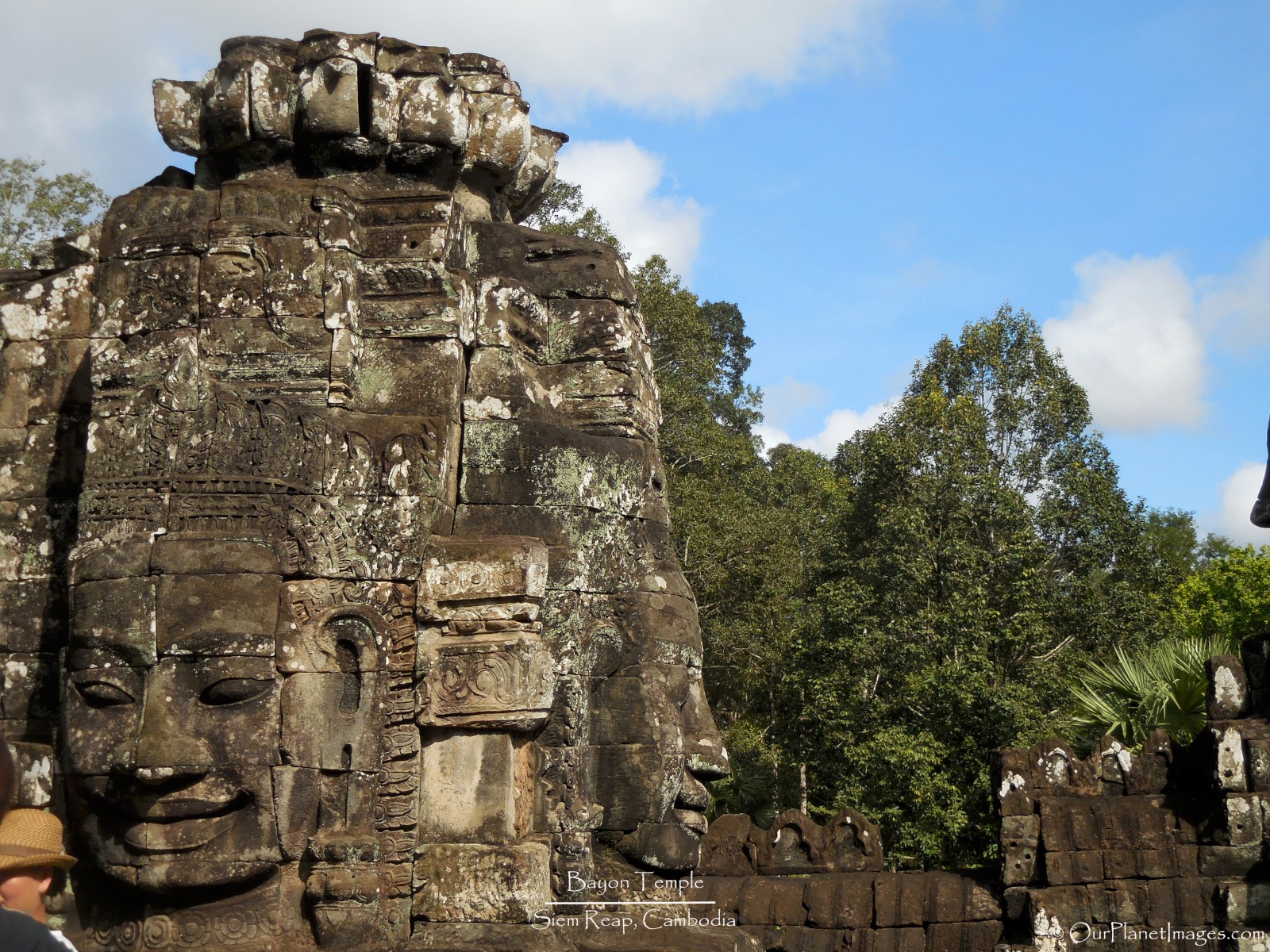
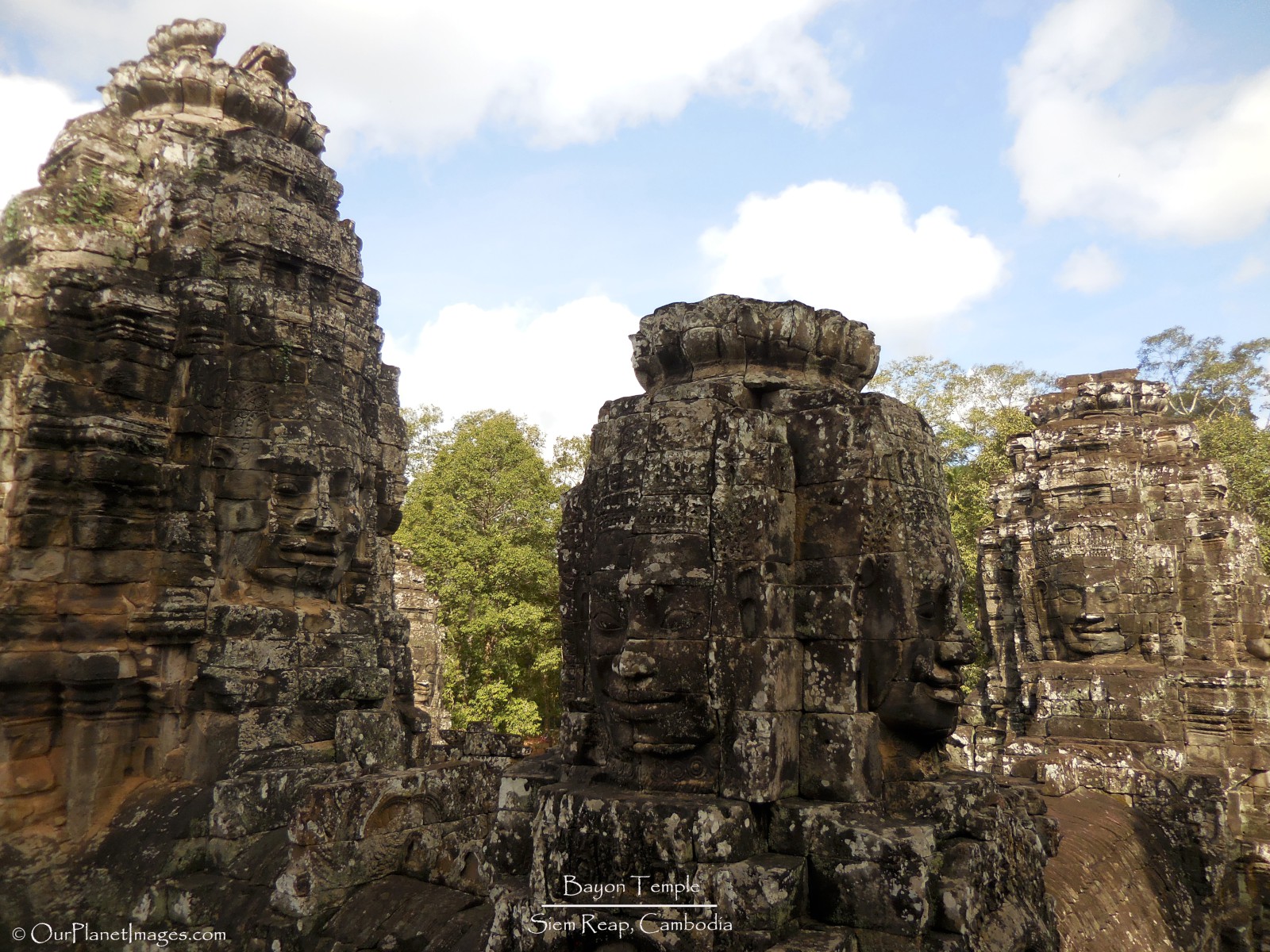

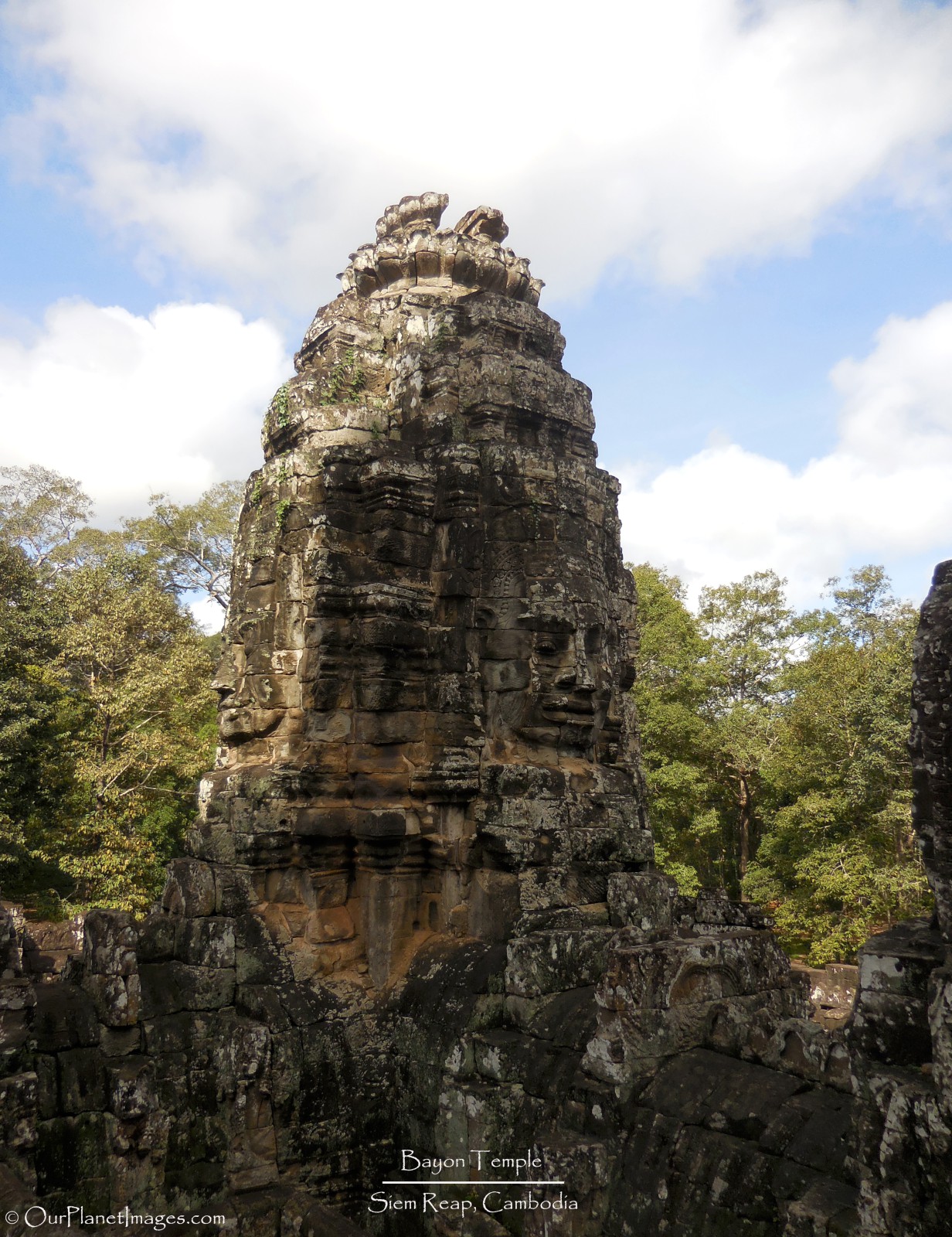
Surrounding the upper terrace is an inner wall and an outer wall. The inner wall is decorated with stone carvings that are primarily Hindu religious scenes from the period around the mid-13th century when the temple was used as a Hindu temple.
The outer wall is decorated with stone carvings that depict historical events and scenes from everyday life of the Khmer.
The following picture is an example of the carvings on the walls surrounding the upper terrace.
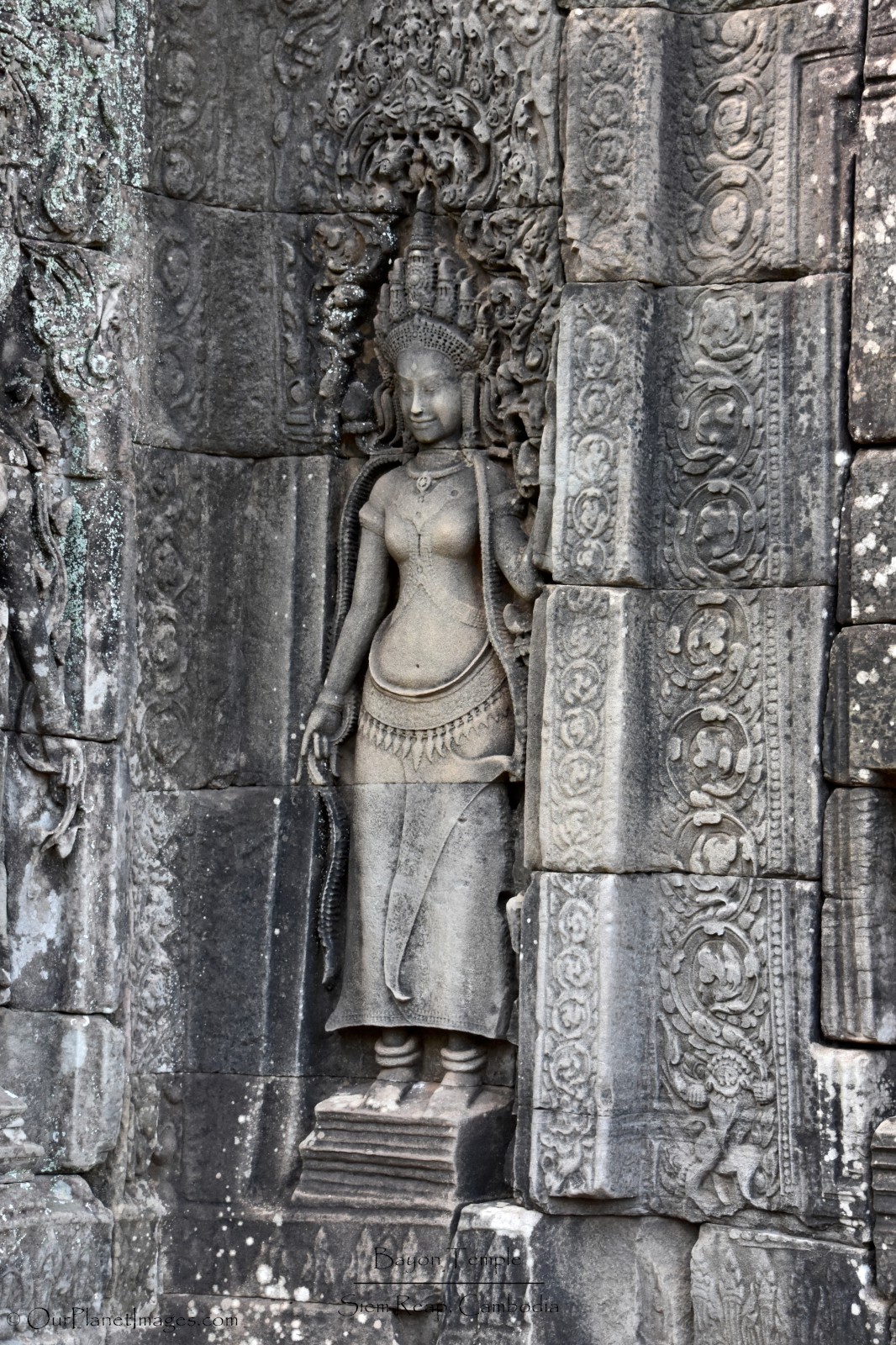
Walking through the temple there are many doorways that are decorated with carvings. The picture below is an example of typical doors in the Bayon Temple
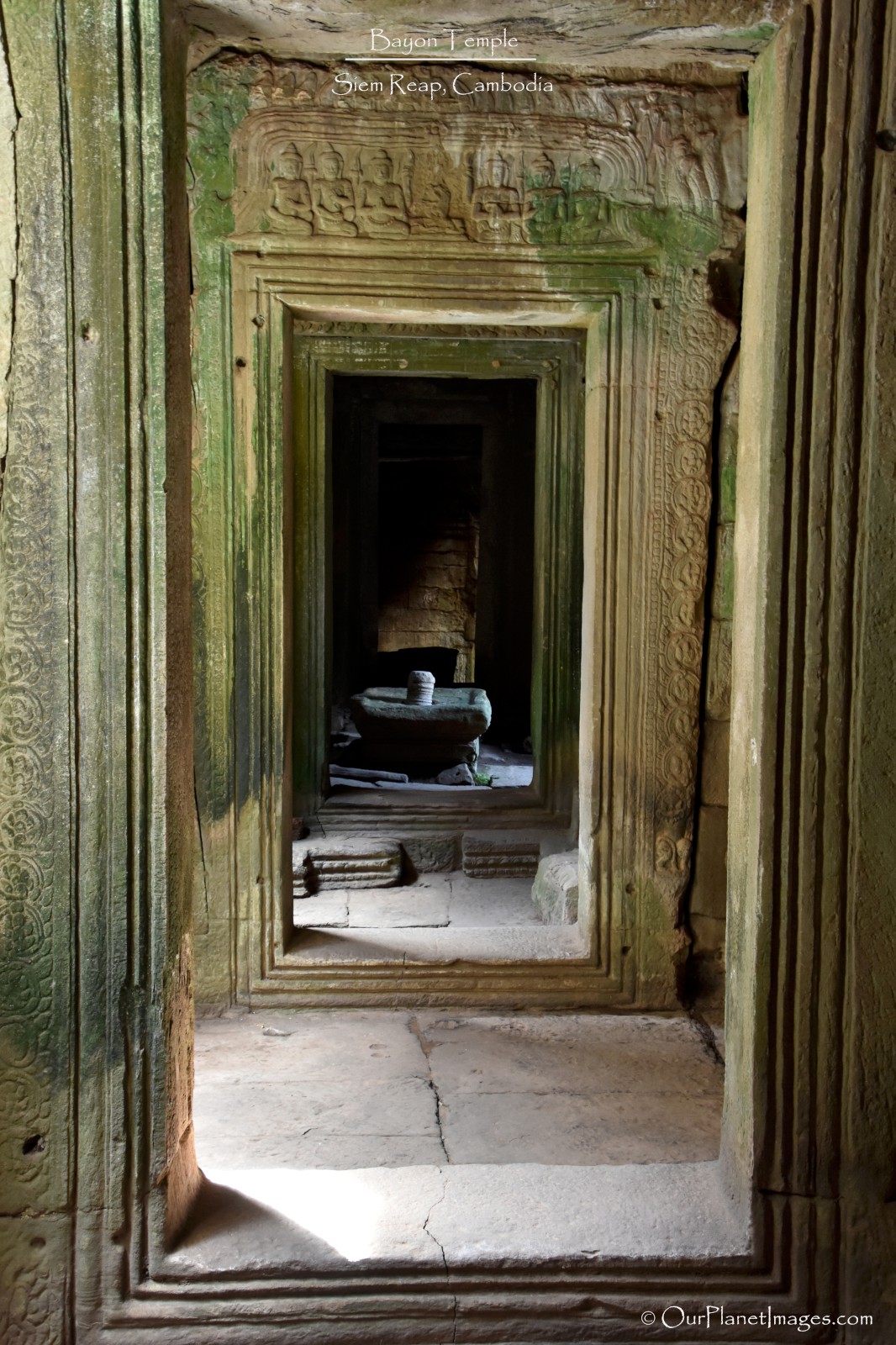
The Bayon Temple is much more than I thought it would be. It is an entire complex and not just a part of Angkor Wat. The stone faces are much larger than I expected and there are many more of them than I thought there would be. It really is hard to translate in words what it is like to be in a site like the Bayon Temple because there is nothing like standing in the middle of something so unusual. Everywhere I looked there was another giant stone face that had a stoic face or a smiling face. It appears that there is no real purpose of meaning for the look of the faces or the extremely high number of faces. Personally, I may not understand everything about the Bayon Temple but I can say that it is an incredible historic site that I am grateful to have been able to experience.
This post is the second in a series of three post on the Angkor complex. The Angkor complex is amazing with three very different attractions. I had dreamed about going to see the Angkor complex for many years and it did not disappoint me. Everything about this archaeological site was bigger and better than I had expected. It truly is one of the top world attractions.
Click on the related posts below to see the other two posts on the Angkor Complex:
Related Posts
